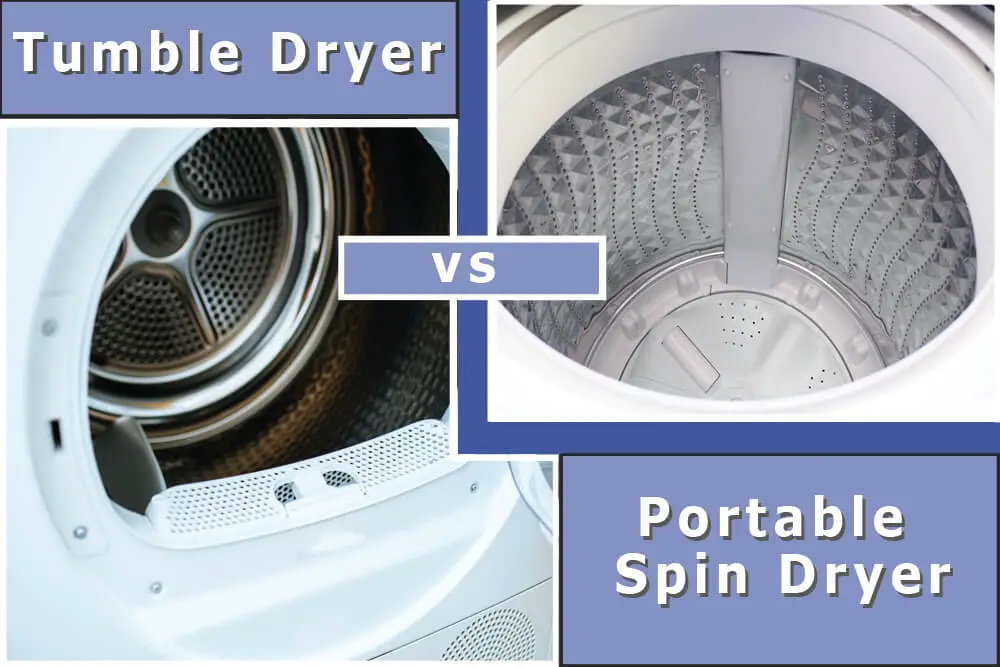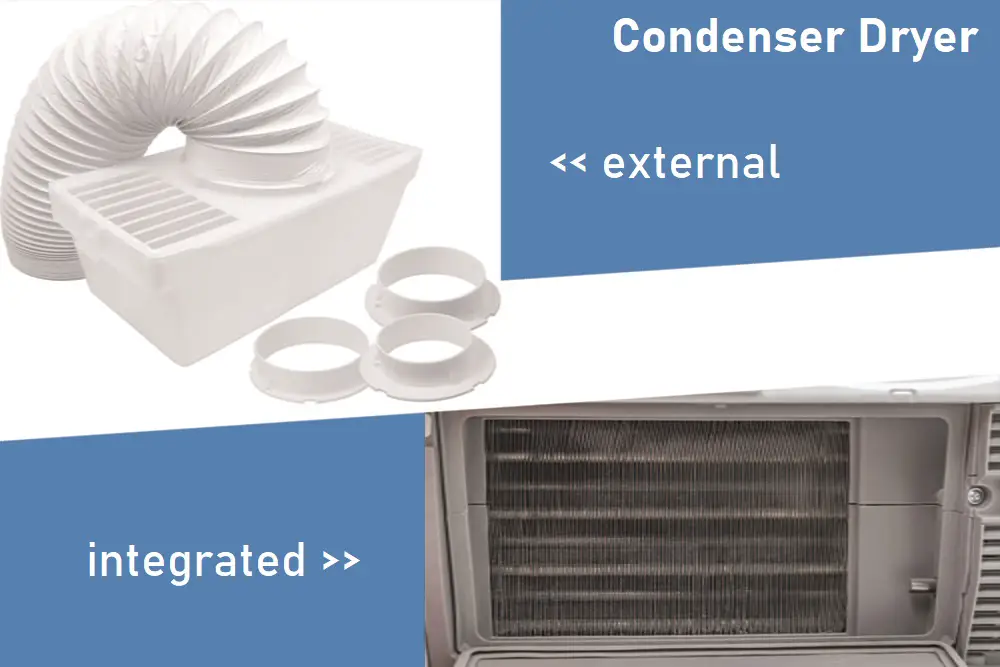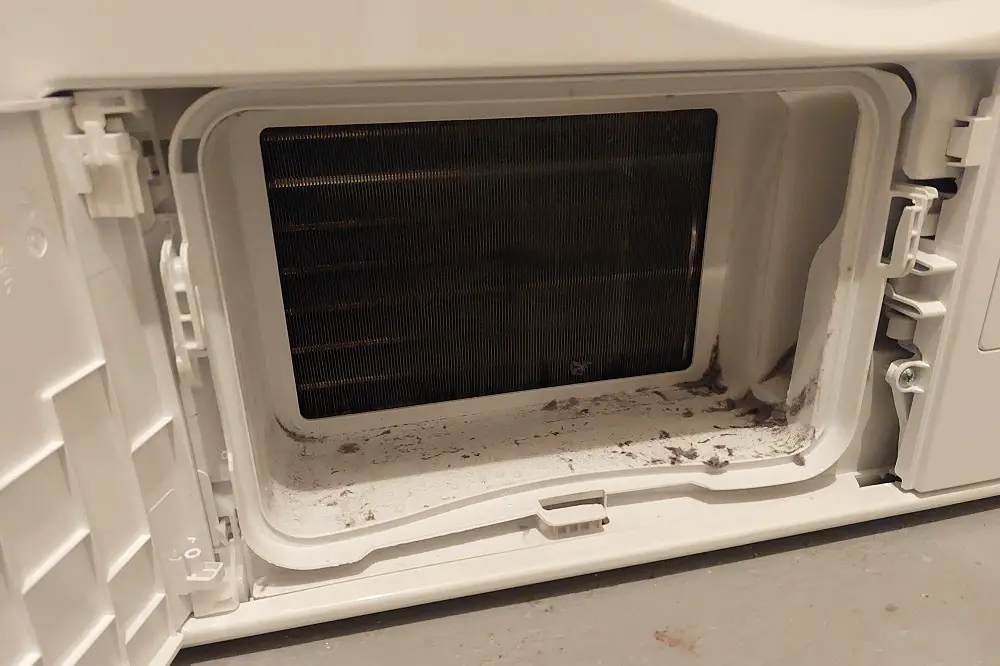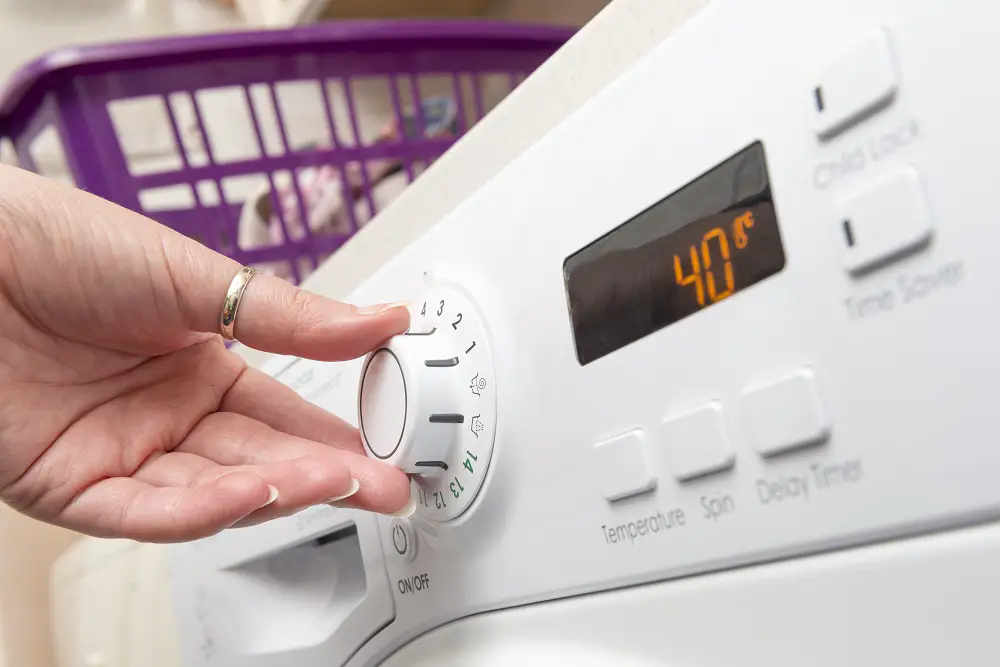A dryer is a convenient option for drying clothes, especially in the winter or rainy seasons. While the two types of dryers – tumble dryers and spin dryers might sound similar, there are several differences between the two.
The primary difference lies in how each type of dryer works to dry clothes. While a spin dryer uses centrifugal force to almost dry the laundry, a tumble dryer uses hot air to completely dry clothes.

Most other differences stem from this primary difference between spin-drying and tumble-drying.
Table of Contents
11 Differences Between Tumble Dryer and Spin Dryer
Here are the main differences between the two types of dryers that will also help you decide which is a better option if you’re considering purchasing a new dryer.
1. Working Principle
Tumble dryers circulate hot air in the drum containing wet clothes. An electric motor causes the drum rotation and the tumbling of clothes to get your laundry dried evenly.
Spin dryers mimic the wringing action of handwashing by spinning the dryer drum rapidly, removing water from the laundry with centrifugal force.
The spin dry is similar to the spin cycle in washing machines but faster, and it vents the moisture to the outside using a drain pipe.
2. Heat Consumption
To tumble dry, you can choose low heat, medium heat, or high heat based on the instructions on the garment’s care label. This heat source is either supplied by gas or an electric heating element.
Spin dryers don’t use heat to remove the excess water.
3. Energy Costs
A typical tumble dryer consumes around 1.2 kWh of electricity per cycle, while a standard spin dryer uses 0.03 kWh.
This huge gap results from the power consumption per hour (500 W vs. 300 W) and the cycle lengths (2.5 hours vs. 6 minutes). What seems to be similar in the power aspect differs extremely in the overall consumption and energy costs.
The annual energy costs for running your tumble dryer amount to about $30, while that of a spin dryer is less than a dollar per year.
4. Running Time
The average running time of a modern heat pump tumble dryer is about 145 minutes for the average laundry. However, drying times vary depending on load type, size, clothes’ wetness, etc.
Also interested in the other tumble dryer types or some different programs? Check Tumble Dryer Cycle Lengths Explained (And How To Reduce It)
Similar to the spin cycle of a washing machine, spin dryer cycles take around 2 – 3 minutes on average. The spin speed is approximately 3200 rpm.
5. Efficiency
A tumble dryer efficiently dries wet laundry since it uses heat and ensures all the water is drained out of the load.
Provided you’ve selected the right drying cycle; you’ll save a lot of time and even have ready-to-wear clothes right out of the dryer.
However, since heat is used, these dryers also use a lot of electricity.
Spin dryers remove the excess moisture (up to 90% of the water) from the dripping wet laundry, but don’t completely dry the clothes.
Air drying is needed to complete the drying process of your damp laundry after using a spin dryer.
6. Simplicity of Use
With several drying options in tumble dryers, you’ll need to select the appropriate cycle based on the garment’s care label.
You may need to sort your laundry into different piles (and not mix towels with regular clothing or delicate items).
A spin dryer is much simpler to use.
All you need to do is load your wet clothes into the appliance, and it spin-dries at high speeds. The only drawback being you’ll need to air dry or hang dry your clothes to dry them all the way.
7. Device Costs
While low-range tumble dryers cost around $200, the higher-end ones cost as much as $2000.
Spin dryers are much cheaper than tumble dryers.
Depending on the drum size, the price of a spin dryer varies between $75 – $164.
8. Noise
While tumble dryers are relatively quiet, spin dryers tend to be noisy due to a high spin speed.
Nevertheless, the extremely short cycle time reduces the unpleasentless of the spin dryer to a minimum.
The spin dryer is filled, turned on and after a few minutes emptied again. The spin dryer doesn’t run several hours and disturbs you while watching tv.
9. Storage Space
Most tumble dryers are front loading and take up some space.
You must ensure sufficient space and also include room to open the door. While a dedicated laundry room isn’t required, vented tumble dryers require space for venting, as do gas dryers (need proper venting).
Most stand-alone spin dryers are top-loading and take up lesser space than tumble dryers.
However, if you get a washer-dryer combo, it might take up more space.
10. Different Types
Tumble dryers come as vented, condenser, and heat pump dryers. While the vented models are the cheapest, they’re also the least energy-efficient and must be installed appropriately.
The heat pump dryers help save energy but take longer to get the clothes dry.
Spin dryers come as electric and manual dryers.
While the manual ones require no electricity, the spinning action is achieved using a foot pedal or a hand crank.
11. Suitability for Different Fabrics
Although tumble dryers have different heat options for different fabrics, they cannot dry all types of fabrics, especially the most delicate ones.
You can dry almost all types of fabric in spin dryers.
The heavier ones may need multiple spin cycles to get rid of as much water as possible.
Direct Comparison of Tumble Dryer vs Spin Dryer
Among the many types of spin dryers and tumble dryers available, here’s a comparison of 2 popular appliances.
| Features | Whirlpool Dryer | Panda Spin Dryer |
|---|---|---|
| Capacity | 22.5 lbs | 22 lbs |
| Voltage | 240 V | 110 V |
| Annual Energy Cost | ~$40 | < $1 |
| Drying time | 45 – 200 minutes | 5 minutes |
| Noise | 60 dB | 72 dB |
| Type | Front-load | Top load |
| Cost | $1549 | $183 |
| Stackable | Yes | No |
Conclusion
While both the drying appliances help reduce the overall drying time, if you want your clothes to dry faster (at the cost of more electricity usage), a tumble dryer is a great option.
However, a spin dryer is more suitable if you’re looking for a cost-effective solution without your appliance consuming much electricity.
If you have a dedicated laundry room, you could always use a spin dryer (or an additional spin cycle in your washing machine) to wring off excess water before putting your laundry into a tumble dryer. This helps reduce the drying time considerably, hence reducing energy costs and utility bills.



